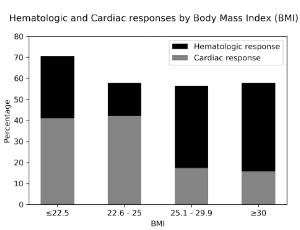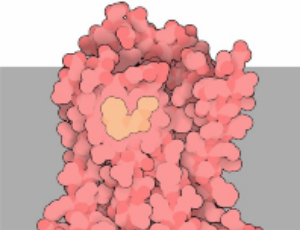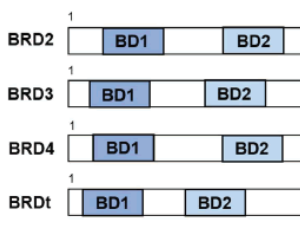Loading
Journal of Clinical Cardiology
ISSN: 2694-5088
Editors Choice Articles
Body Mass Index and Treatment Response in Patients with Cardiac Light-Chain Amyloidosis
So Yeon Kim, Raymond Comenzo, Amanda R. Vest, Nauman Saleem Siddiqui, Cindy Varga
Elevated body mass index (BMI) has been associated with an increased risk of cancer and has been shown to have a negative impact on survival in patients with breast, prostate, oral cancer, and leukemia. In plasma cell dyscrasias, obesity has not only been shown to be a risk factor for the development of multiple myeloma, but also has been associated with a higher rate of progression from monoclonal gammopathy of unknown significance (MGUS) to multiple myeloma, and if intervened on, has bee
J Clin Cardiol, 2021, Volume 2, Issue 1, p6-10 | DOI: 10.33696/cardiology.2.007
Beneficial Effects of Surgical Closure of Atrial Septal Defect Outweigh Potential Complications in Sick Infants
Takeshi Tsuda, Abdul M. Bhat
Atrial septal defect (ASD) is a common congenital heart disease diagnosed during childhood. Persistently increased pulmonary blood flow and dilated right atrium (RA) and right ventricle (RV) result in multiple symptoms and morbidities in adulthood; untreated adults may develop exercise intolerance, congestive heart failure, atrial tachyarrhythmias, pulmonary hypertension (PH), embolic stroke, or even death.
J Clin Cardiol, 2021, Volume 2, Issue 2, p23-26 | DOI: 10.33696/cardiology.2.011
COVID-19 Delays Presentation and Management of Acute Coronary Syndrome
Michael Y. Henein, Matteo Cameli, Maria Concetta Pastore, Giulia Elena Mandoli
The COVID-19 pandemic started at the end of 2019 and remains carrying a health threat and significant economic consequences. Over the last two years, COVID-19 has been the main Public Health issue, and has impacted regular healthcare systems, with significant build-up of waiting lists and delay in optimum management of other serious medical conditions including heart diseases and cancer.
J Clin Cardiol, 2022, Volume 3, Issue 1, p25-28 | DOI: 10.33696/cardiology.3.030
Preparing for a More Public Health-Aware Practice of Medicine in Response to COVID-19
Kari Fitzmorris Brisolara, Dean G. Smith
After one year in a pandemic, we mourn the loss of over half a million lives in the United States, and over four million worldwide, and remain concerned over the challenges facing the families of 35 million people in the United States, and 200 million worldwide, who have suffered from cases of COVID-19.
J Clin Cardiol, 2021, Volume 2, Issue 3, p43-45 | DOI: 10.33696/cardiology.2.016
Beta 3-Adrenergic Receptor (β3-AR) Activation at the End of Sustained Ischemia and/or Early Reperfusion may Prove to be a Valuable Cardioprotective Strategy
Ruduwaan Salie, Erna Marais, Amanda Lochner
The contribution of β3-AR activation towards ischemiareperfusion (IR) damage largely depends on the disease stage, severity, experimental model as well as drug specificities which should be considered when investigating β3-AR pharmacology for potential therapeutic applications. These conceptions largely contribute to the discrepancies of the subsequent role of β3-AR activation in the cardiovascular disease process.
J Clin Cardiol, 2022, Volume 3, Issue 2, p47-50 | DOI: 10.33696/cardiology.2.034
Bromodomain and Extra-Terminal Family Protein Inhibitors: A Potentially New Therapy for Heart Disease
Jing Mu, Ming-Hui Zou
Bromodomain-containing protein 4 (BRD4) is a member of the mammalian bromo- and extra-terminal domain (BET) protein family, which also comprises BRD2, BRD3, and testis-specific BRDt.
J Clin Cardiol, 2021, Volume 2, Issue 3, p62-68 | DOI: 10.33696/cardiology.2.020
External Validation of Four Cardiovascular Risk Prediction Models
Alauddin Bhuiyan, Arun Govindaiah, R Theodore Smith
Background and Purpose: Cardiovascular disease (CVD) is a leading cause of death and disability in the world. Many CVD risk prediction models have been created, but those most widely used in clinical settings have not been externally validated, a significant gap addressed herein. Methods: Using the Multi-Ethnic Study of Atherosclerosis (MESA), we have externally validated the Framingham Risk Score, ASSIGN (Assessing the cardiovascular disease risk using SIGN) risk score, Atherosclerotic Cardiovascular Disease (ASCVD) risk score, and the European SCORE model, which were selected based on popularity among clinicians and frequency of clinical use.
J Clin Cardiol, 2024, Volume 5, Issue 2, p73-80 | DOI: 10.33696/cardiology.5.057
About Scientific Archives
Scientific Archives is a global publisher initiated with the mission of ensuring equal opportunity for accessing science to research community all over the world. Spreading research findings with great relevance to all channels without any barrier is our goal. We want to overcome the challenges of Open Access with ensured quality and transparency.
